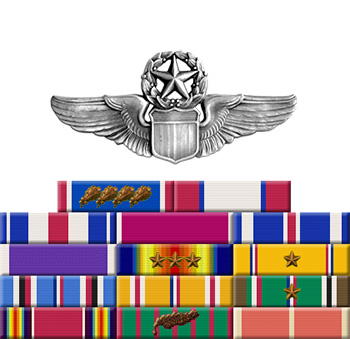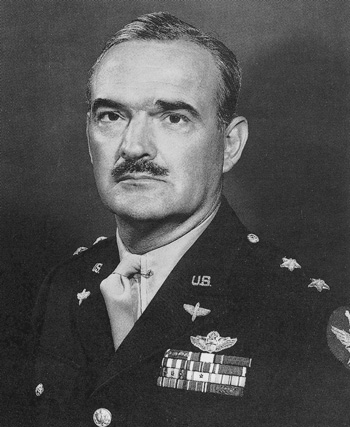
|
Frank O. Hunter |
 |
|||
| Rank, Service | ||||
Major General, U.S. Army Air Forces |
||||
| Veteran of: | ||||
|
||||
| Tribute: | ||||
Frank Hunter was born on December 8, 1894, in Savannah, Georgia. He enlisted in the Aviation Section of the U.S. Army Signal Corps on May 9, 1917, and was commissioned on September 21, 1917. After completing pilot training, Hunter began flying combat missions in France with the 103rd Aero Squadron. On his first patrol, Lt Hunter downed two German planes and landed safely after being wounded in the head. By the end of the war, he had been credited with destroying 9 enemy aircraft in aerial combat. He was discharged on February 24, 1919, but returned to the Army Air Service on February 20, 1920. Between the World Wars, Hunter served in many flying assignments, mainly in Pursuit Squadrons around the United States and in Panama. In July 1940 he was attached to the Office of the Military Attache in London, England, as a Military Observer. In December 1940 he became Commanding Officer of the 23rd Composite Group at Orlando AB, Florida, and in February 1942, he was assigned to Headquarters Army Air Forces in Washington, D.C. Gen Hunter joined the Eighth Air Force at Bolling Field in May 1942, and became Commanding General of Eighth Fighter Command in Europe the same month. Returning to the United States in August 1943, he was named Commanding General of First Air Force, where he was charged with training replacement combat crews in defense of the Eastern United States. General Hunter retired from the Army Air Forces on April 1, 1946, and died on June 25, 1982. He was rated a Command Pilot, Combat Observer, and Technical Observer. He became the only living person in history to have a U.S. Military base named after him when Hunter Army Air Field in Savannah, Georgia, was named in his honor in May 1940. Frank Hunter was buried at the Laurel Grove Cemetery in Savannah, Georgia. |
||||
|
||||

